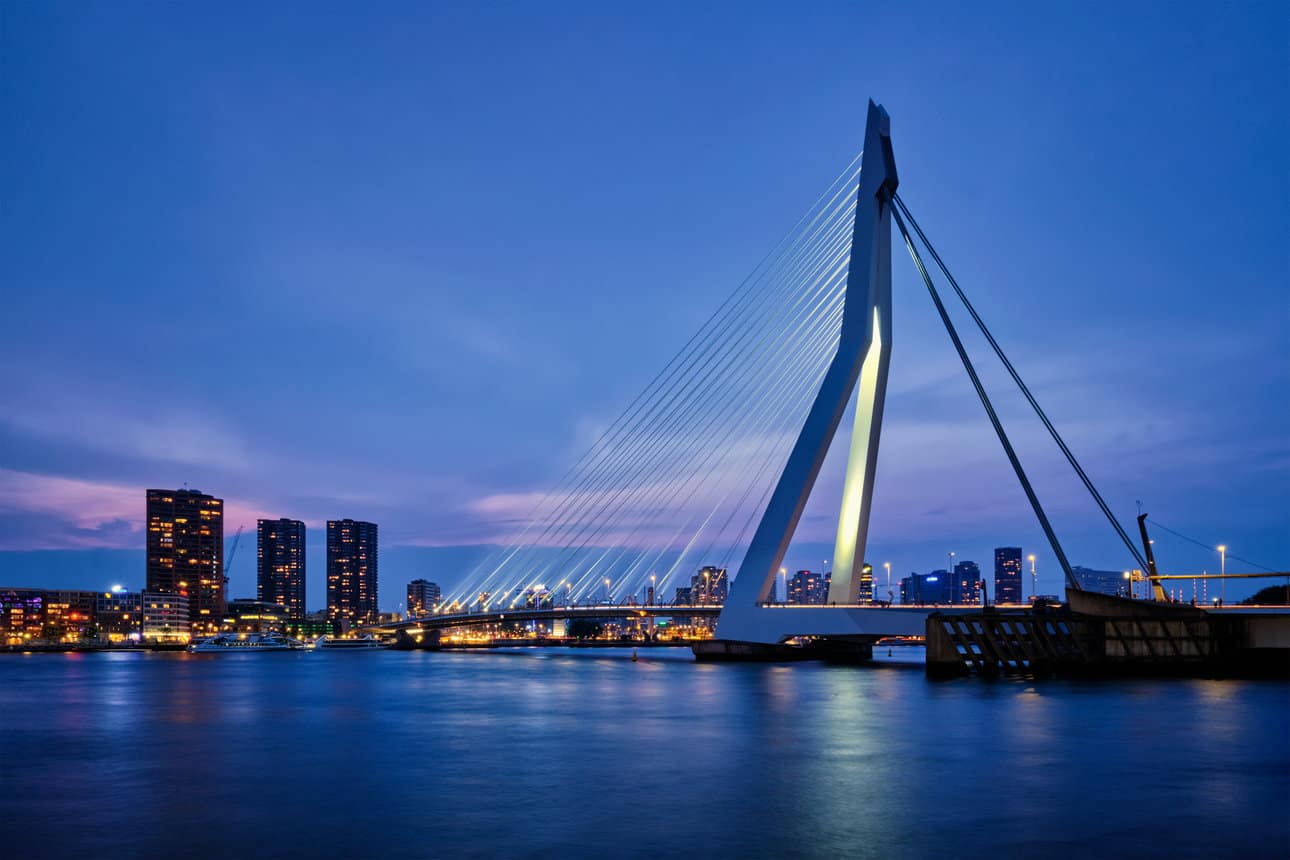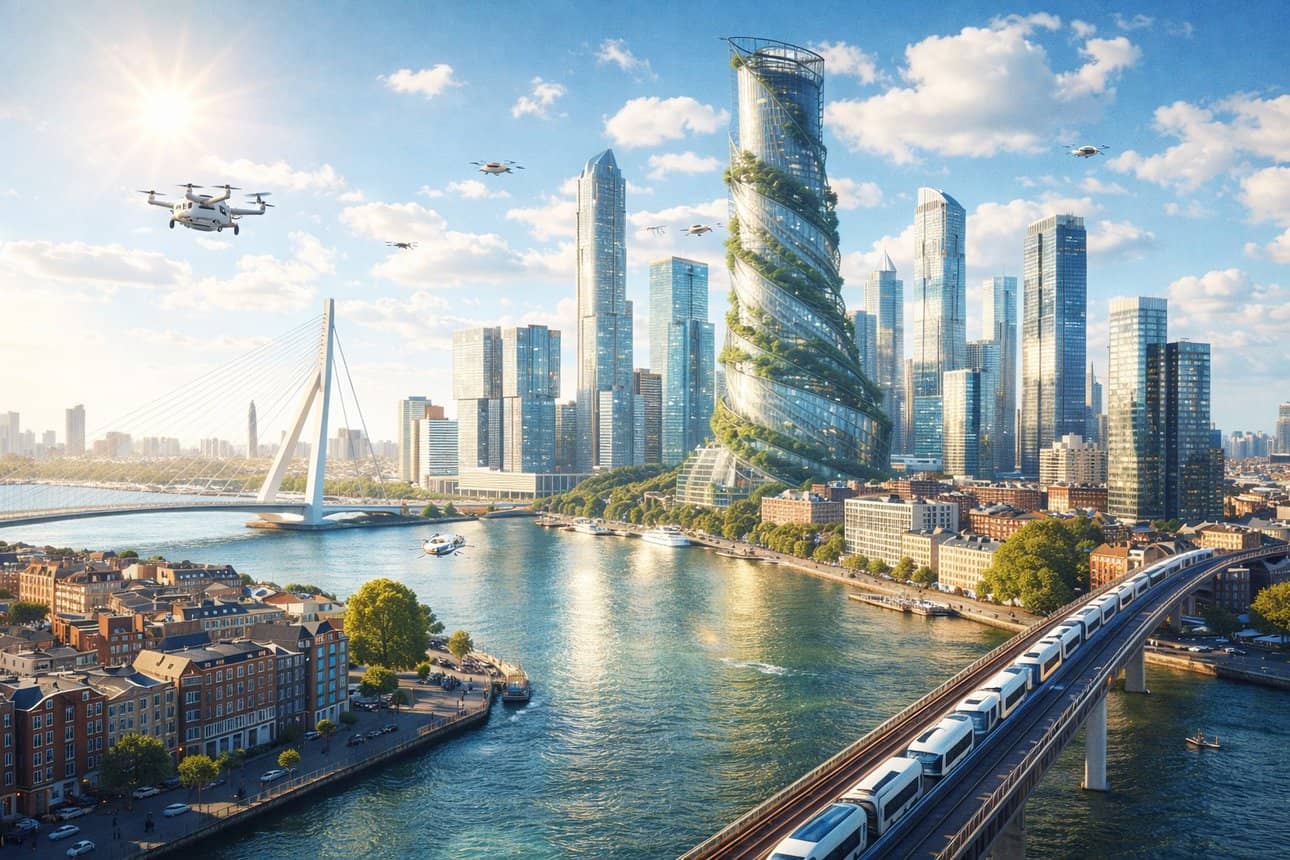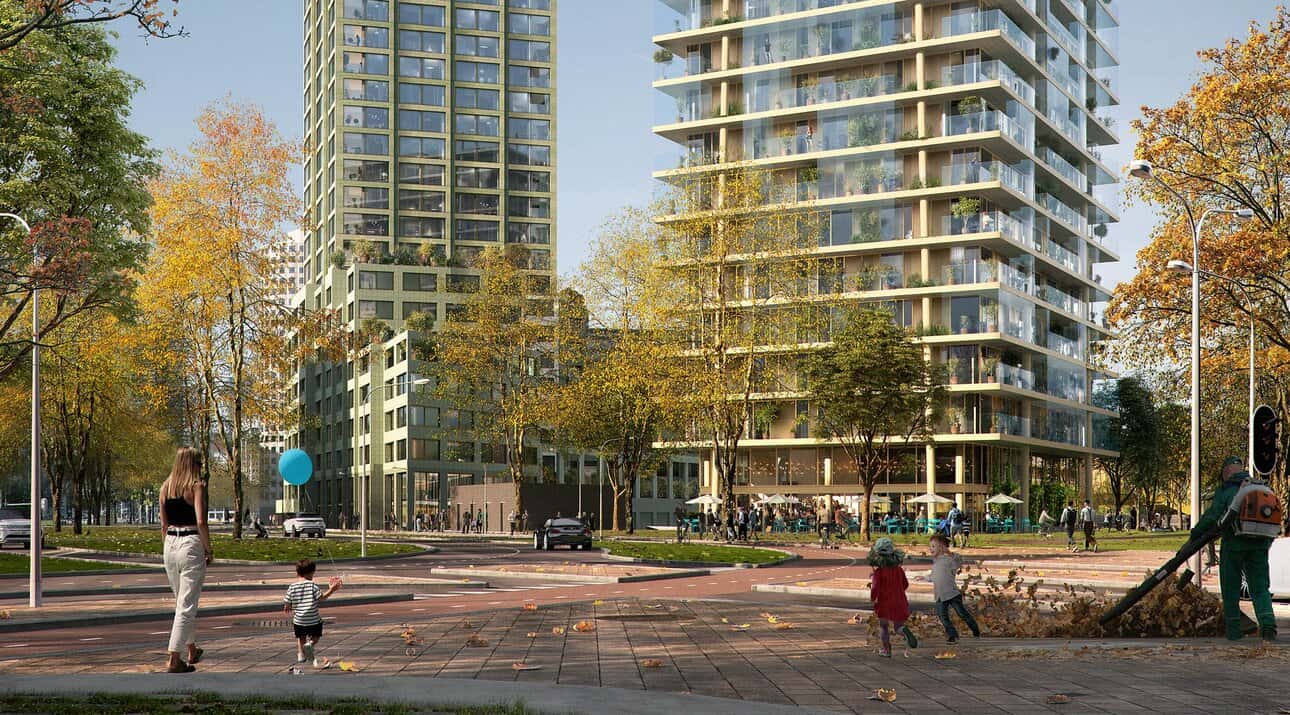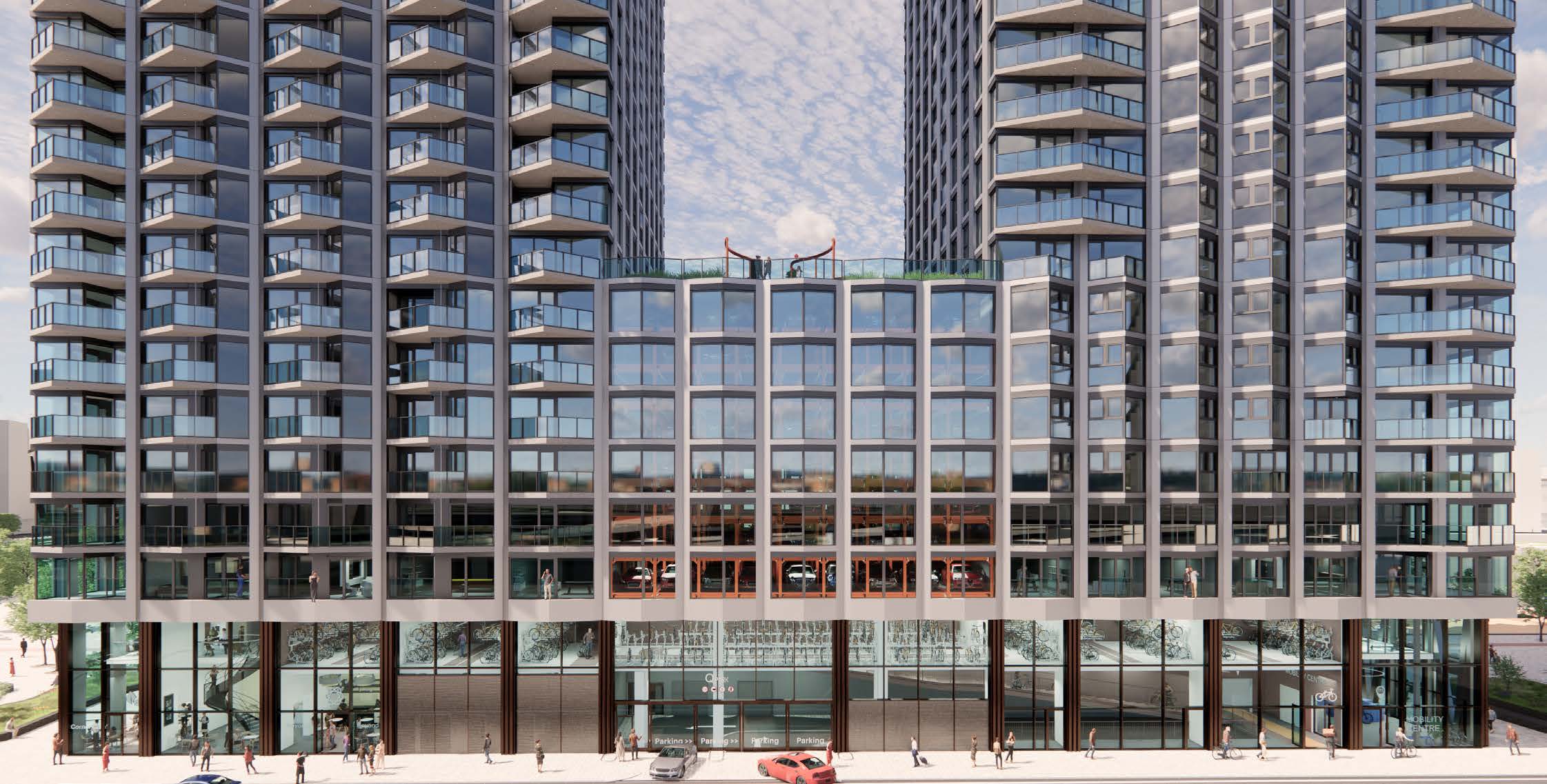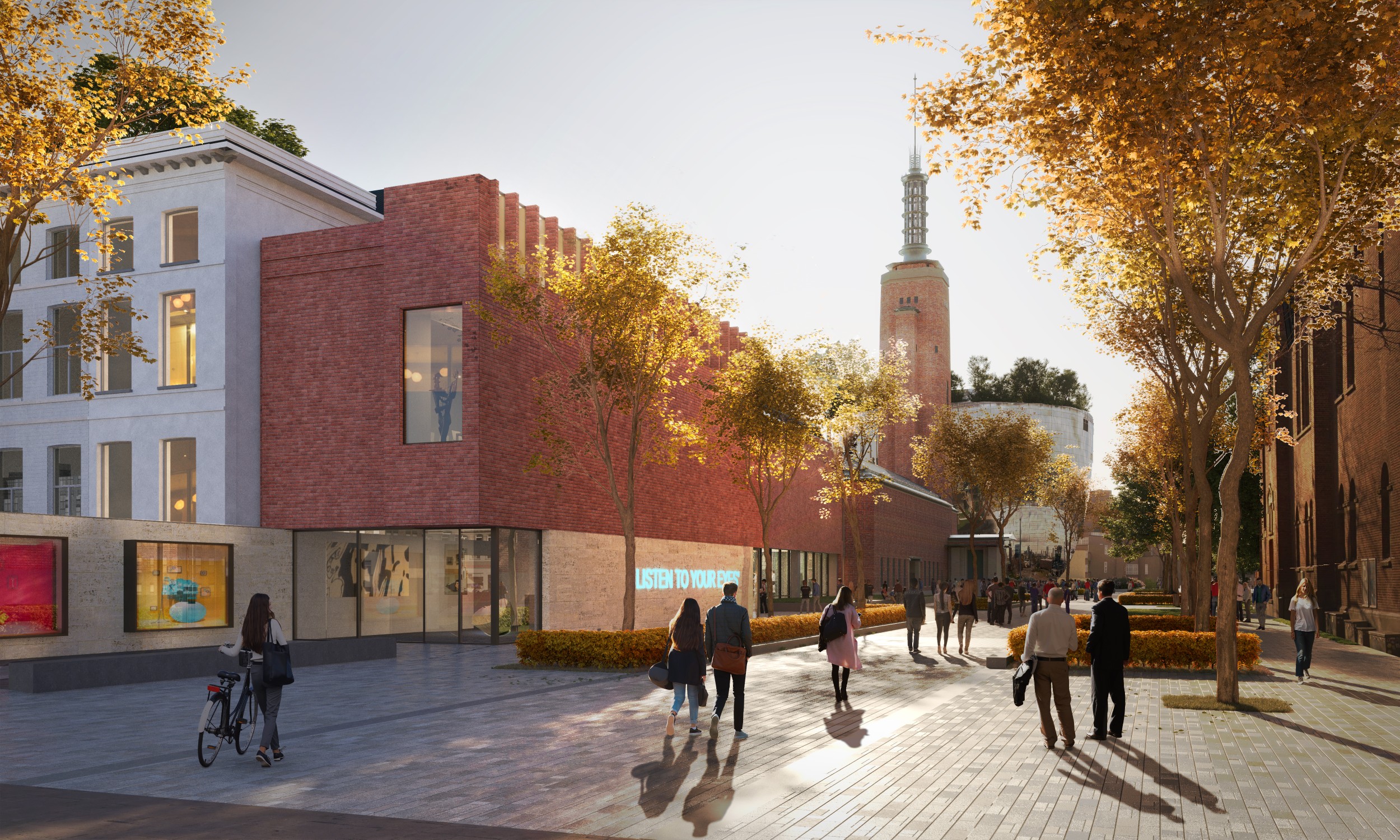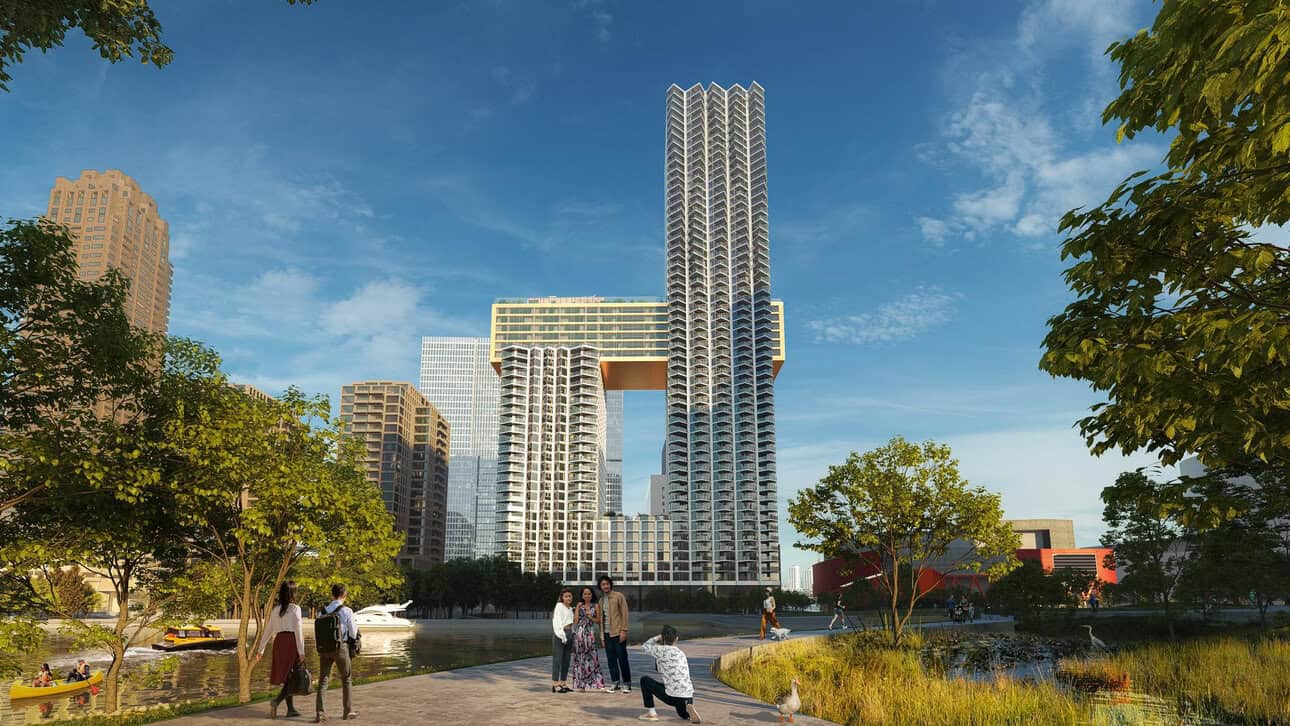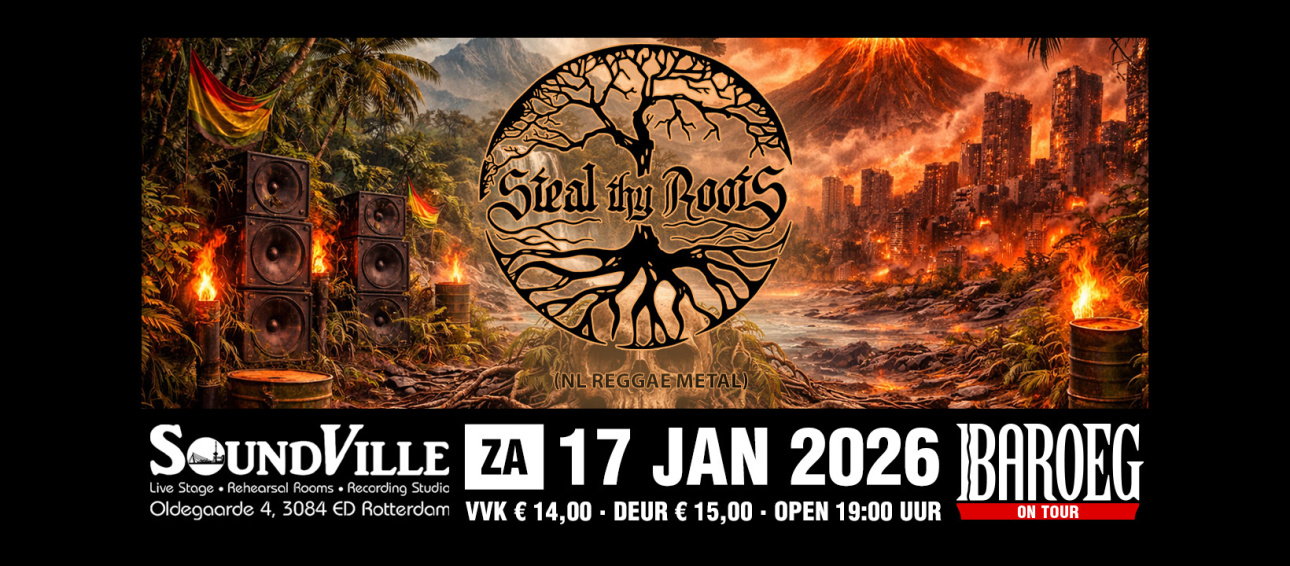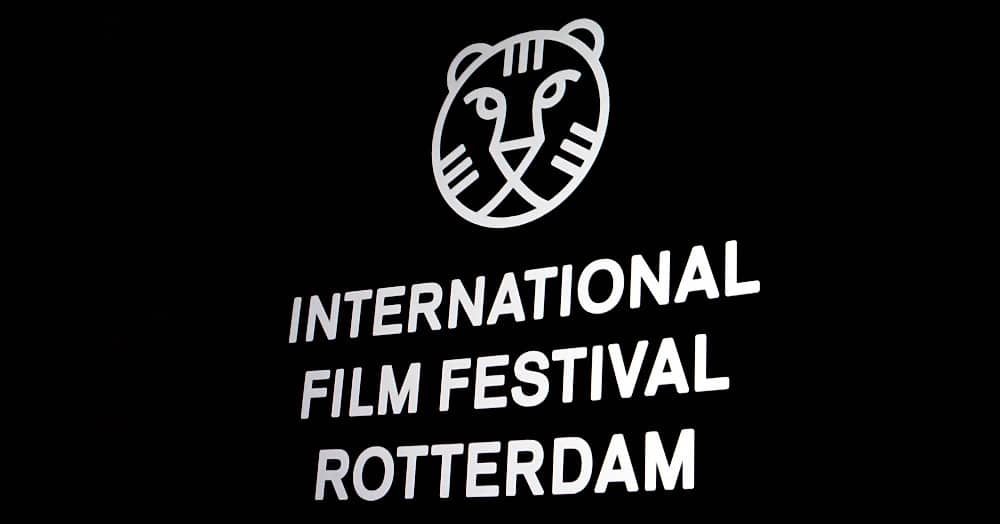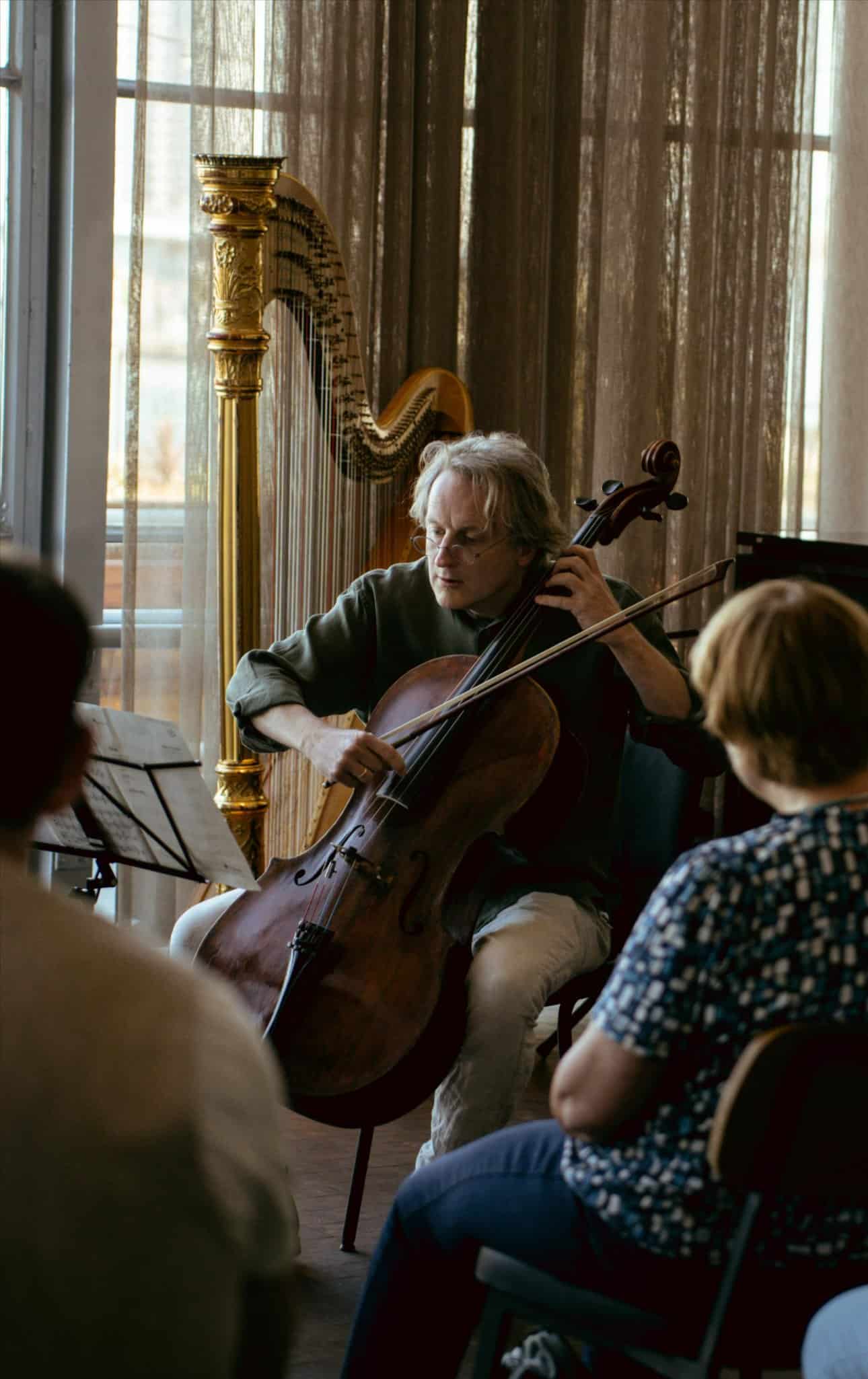Rotterdam is a city of crossings. With around 1,100 bridges in all shapes and sizes, water is never far away, and neither is a route across it. Here are four of our most recognisable bridges, the ones you will almost certainly meet if you explore the riverfront and the skyline.
Erasmusbrug (Erasmus Bridge)
If you want one structure that sums up modern Rotterdam, it is the Erasmusbrug. The Erasmusbrug is named after the humanist and theologian 'Desiderius Erasmus Roterdamus' (1466–1536). Locals call it De Zwaan, the Swan, because of the white, leaning pylon and the sweep of cables that give it a graceful, swan-like design.
Here are the headline numbers. The bridge is 802 metres long in total, with a 139-metre high pylon, and 40 stay cables. At the southern end is an 89-metre bascule section, built so tall ships can still pass. The city also notes that this bascule bridge is the largest and heaviest in Western Europe. The bridge was designed by Dutch architect Ben van Berkel (UNStudio).
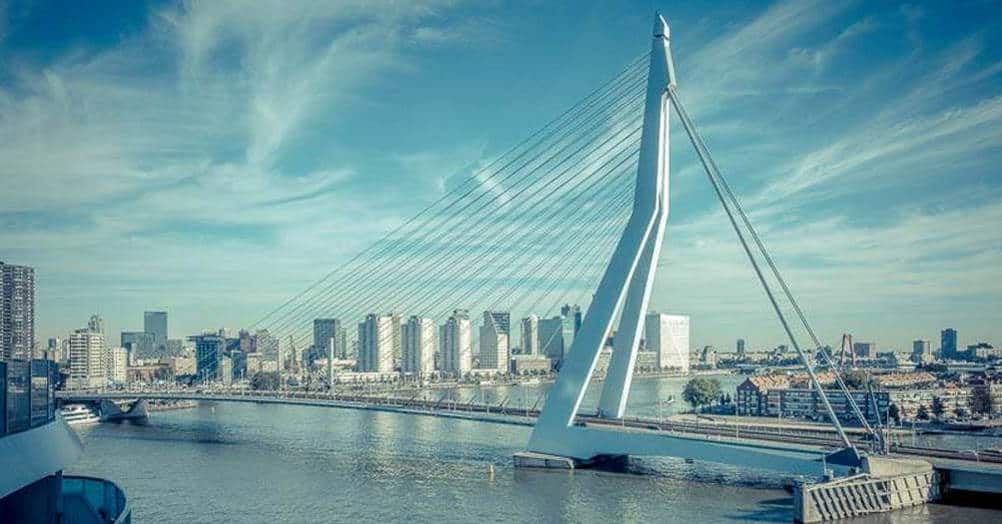 Erasmusbrug - Erasmus Bridge 📷 Josef Sejrek
Erasmusbrug - Erasmus Bridge 📷 Josef Sejrek
The Erasmusbrug opened in early September 1996 and quickly became a symbol of how the city was stitching itself back together across the Nieuwe Maas, linking the centre with the Kop van Zuid. It was not entirely smooth sailing at first. After it opened, engineers had to address unexpected movement under certain wind and weather conditions, and extra damping was part of the solution.
The construction of the Erasmus bridge cost in excess of 165 million euros. It was officially opened by Queen Beatrix on September 6th, 1996. The bridge is a well known national landmark and has been featured in Red Bull Air Race as well as the 2010 Tour de France. It's also the home of the annual National Firework show. The construction of the bridge brought about much-needed economic development for the Kop van Zuid area.
If you visit now, you are seeing a bridge that is still being cared for. The city carried out major maintenance in 2024, including cleaning and repainting in the original light blue, and resurfacing parts of the cycling route. Walk it at dusk for the skyline, cycle it for speed, or take a water taxi underneath it so you can see the bascule section from the river.
Willemsbrug
Just upstream sits the Willemsbrug, a red counterpoint to the white Swan. The current bridge dates from 1981 and was built to replace an earlier crossing that had become inadequate, and in wartime had become painfully vulnerable.
The city’s figures for the current Willemsbrug are bigger than many guidebooks suggest: 366 metres total length, 34 metres wide, with its highest point 65 metres above NAP, and a pylon spacing of 270 metres.
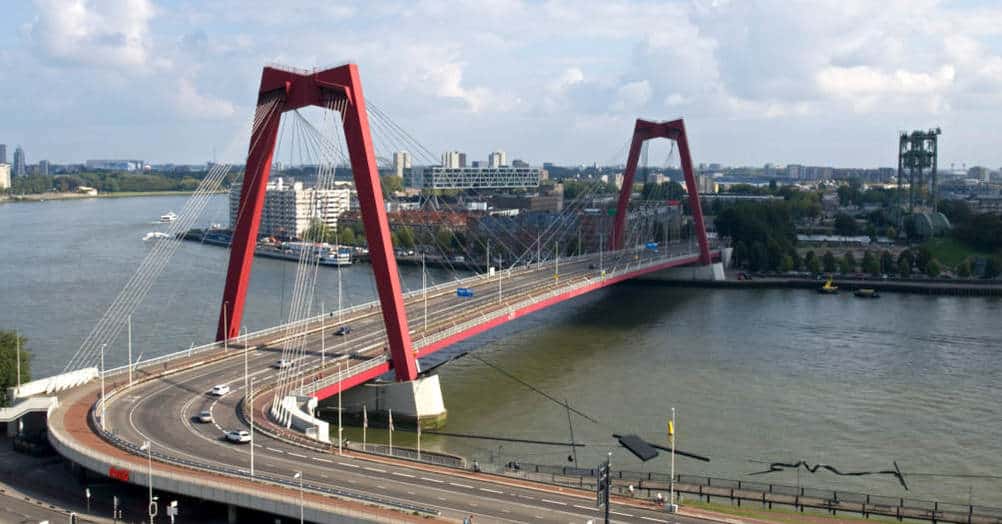 Willemsbrug - Willems bridge
Willemsbrug - Willems bridge
Fun fact: The current Willemsbrug is actually the second bridge with this name. The original Willemsbrug, built in 1878, was a swing bridge that had to be replaced because it couldn't handle the increasing traffic. What you are crossing isn't only steel and traffic flow, but also a historic choke point. The Willemsbrug and the nearby riverfront played a significant role in May 1940, when Dutch marines defended this approach during the German invasion. That story is part of why the bridge still carries emotional weight as well as cars and bikes.
The Willemsbrug is named after King Willem III. The architect responsible for the Willemsbrug was Cor Veerling (Gemeentewerken). Construction of the bridge began in 1975. The bridge was opened to the public in 1981.
In 2017 the municipality carried out major maintenance, refreshed the distinctive red finish, added new decorative lighting, and changed the road layout to create more space for cyclists and pedestrians.
Even though the Willemsbrug is not considered as pretty or as famous as the nearby Erasmusbrug, it is highly recommended to walk across the Willemsbrug at night for a stunning view of the Rotterdam skyline, with the Erasmusbrug included. It is one of the best viewpoints back towards the city centre and the older quays, especially on a clear night when the red pylons glow.
De Hef (Koningshavebrug)
De Hef is a reminder that Rotterdam isn't only about today’s skyline. Officially the Koningshavenbrug, it is a former railway lift bridge built between 1925 and 1927. It was built for the Rotterdam to Dordrecht line, and it is now protected heritage. Trains stopped using the bridge in 1993, when rail traffic was rerouted through the Willemsspoortunnel, but De Hef stayed as a landmark.
The Hef was designed by Dutch engineer Pieter Joosting and was officially opened on the 31st of October 1927. The Hef has a length of 79 meters and carries 2 railway tracks. This bridge is a significant example of industrial heritage in the Netherlands. It was also the first of its kind in Europe. It was the first of its kind in all of Western Europe.
The bridge was severely damaged by the Nazi bombardment in 1940, However, due to its significance to the railway system, it was quickly rebuilt. The Hef hasn't been used since 1993 and is listed as a national monument.
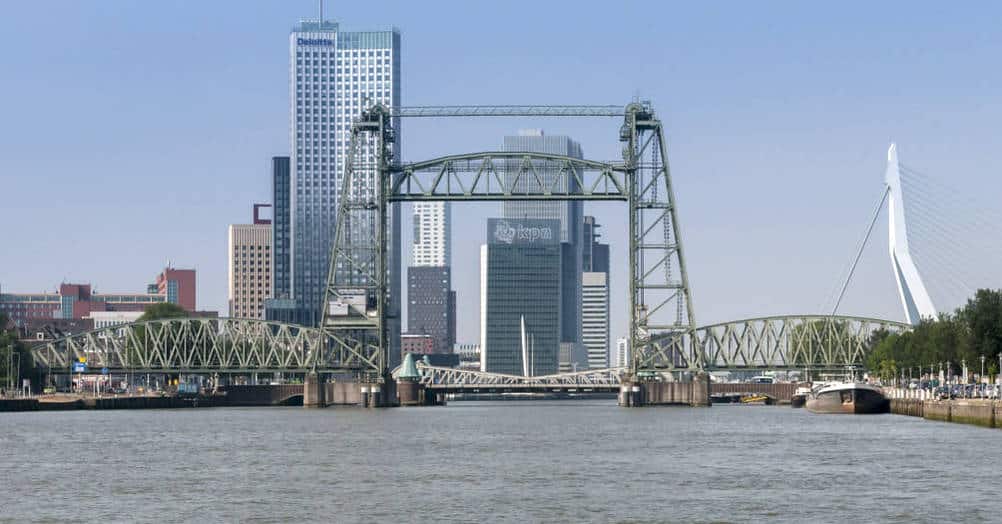 De Hef - Koningshavenbrug
De Hef - Koningshavenbrug
De Hef underwent significant renovations between 2014 and 2017. The historic railway bridge, decommissioned in 1993, had its central lift span temporarily removed in 2014 for an extensive refurbishment. NOS reported that the steel section weighed 560 tonnes and measured 55 by 9 metres. The section was reinstalled in February 2017 after repairs were completed, preserving its status as a national monument and a cherished symbol of Rotterdam's industrial past.
The best views are from Noordereiland and the quays around it, where you can frame De Hef with the newer bridges and get a sense of Rotterdam’s layered infrastructure.
The Jeff Bezos controversy
In 2022, De Hef gained global attention during a controversy surrounding Jeff Bezos’ luxury yacht. The €500 million vessel, built at the Oceanco shipyard in Alblasserdam, was too large to pass under the bridge. Rumours circulated that the central span might need temporary removal to accommodate the yacht. However, after significant public outcry, Oceanco reportedly withdrew its request, ensuring De Hef’s historical integrity remained untouched. This episode reaffirmed the cultural and emotional value the bridge holds for the people of Rotterdam.
Van Brienenoordbrug
The Van Brienenoordbrug connects the Eastern part of Rotterdam with the south side of the city. It's a twin tied-arch motorway bridge. But would you guess that one of the arches is actually 25 years older than the other? The original single arch bridge built in 1965 was so heavily used, city officials eventually decided to double its width by adding a second, almost identical arch, in 1990.
The Van Brienenoordbrug is 1320 metres long and carries 12 lanes of traffic. On any given day, over 250,000 vehicles will cross the bridge. The Van Brienenoordbrug is part of the busiest highway in the Netherlands, the A16. The bridge itself is the longest of its kind in the Netherlands.
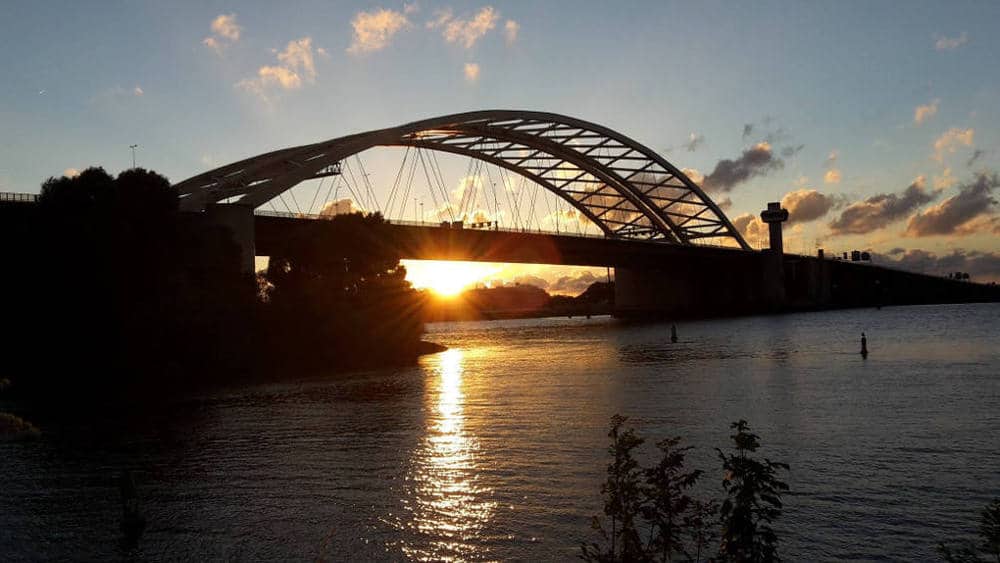 Van Brienenoordbrug 📷 Johan Klos
Van Brienenoordbrug 📷 Johan Klos
The Van Brienenoordbrug wasn't named after an individual. The name actually refers to the island upon which it's partially built: Eiland van Brienenoord. The island, in turn, was named after baron Arnoud Willem van Brienen van de Groote Lindt, who used to own the island. The Van Brienenoordbrug was designed by W.J. van der Eb and W.P. Goedhart.
The bridge also has a bascule (drawbridge) section which takes approximately 18 minutes to open and close. Luckily, this is rarely the case. Of the 140,000 ships that pass through the bridge, only 500 require the bridge to open and close.
Renewal of the bridge begins with an engineering phase in 2027. Under the current plan, key works follow in 2029, 2030, and 2032, and the overall programme is expected to be completed around 2033.

